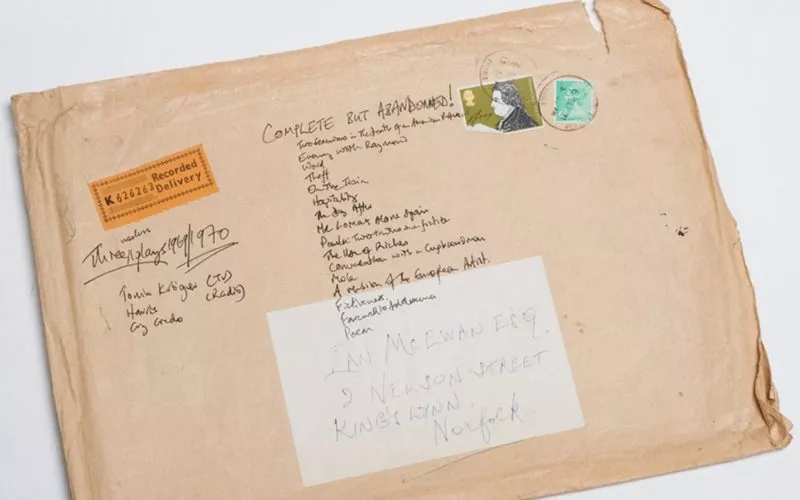The letters between Ian McEwan and John Updike reveal the two writers’ mutual high regard and close friendship. The exchange began in 2004 after they met at the Guardian Hay Festival, and continued until just weeks before Updike’s death in 2009. In this letter below, from December 2005, McEwan thanks Updike for sending his recent study of American art, Still Looking, and describes the “cloud of numb inaction” that has overtaken him as he contemplates starting On Chesil Beach, which is itself a novel about delayed inaction. “I get like this when I think I’m about to start writing a new novel – I do nothing.” He adds, “Looking, with pride of ownership, at the shelves in my library bearing your books, I don’t imagine this sort of delaying thing happens to you much.”
This admiration seemed to go both ways. John Updike reviewed Atonement in The New Yorker in March 2004 and praised McEwan’s ability to transport his readers so easily to a place of his imagination. “Picture after picture, in the haze of this midsummer, arises to challenge and flatter the reader’s capacity for visualisation.”
Updike compares McEwan’s plot structure to Jane Austen and his tone to Virginia Woolf, and you really can’t ask for a better review that that. “But in the warmth of these days, the year’s hottest, a Virginia Woolfian shimmer overlays the Austenish plot, which keeps threatening to dissolve. The play, for example, does not go on (until sixty-four years later).”
His descriptions of the war wounded that Briony tends to in hospital are the recipients of equal praise as Updike highlights how extraordinary it is to be able to describe war so fluently, when the writer himself has no experience of it at all. “If we marvel, it is at the ability of contemporary English writers (McEwan was born in 1948) to capture the tastes and sights of a past they did not witness even as children.”
History does not relate whether the “delaying thing” happened to John Updike or not, however the mutual admiration that these two writers have for each other is clear for all to see.
Thank you to The Harry Ransom Centre, University of Austin, Texas for providing us with this image of the letter show below.






